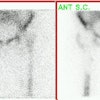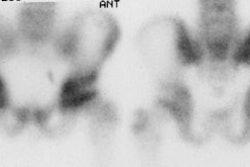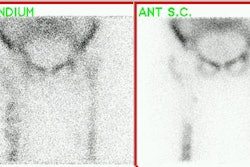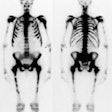Semin Nucl Med 1999 Jan;29(1):57-68
Sentinel node localization in breast cancer.
Glass EC, Essner R, Giuliano AE.
The status of the axillary nodes is the strongest known prognostic variable in
patients with early breast cancer, and is routinely used in planning
postoperative therapy. Conventional axillary lymph node dissection is limited by
sampling error and potential morbidity. Sentinel node techniques have
revolutionized the management of axillary nodes. Accurate identification and
focused histologic evaluation of the sentinel node allow accurate prediction of
the tumor status of other axillary nodes, thereby avoiding the morbidity and
expense of a complete axillary dissection in node-negative patients. Radiotracer
techniques play an important role in the preoperative and intraoperative
localization of the sentinel nodes. Optimal localization of the sentinel node
requires the use of both preoperative lymphoscintigraphy and intraoperative
radiosensitive probes. Lymphoscintigraphy also identifies patients with
lymphatic drainage to sites other than the axilla, thereby allowing more
appropriate treatment and follow-up in this subset of patients. Procedures for
localizing sentinel nodes require an understanding of the kinetics of the
radiopharmaceuticals or other tracers used and
the detection devices employed in each institution. Both surgical and nuclear
medicine personnel should understand these principles, and close cooperation
between surgeons, nuclear medicine physicians, and pathologists is essential for
the application of sentinel node techniques.
Publication Types:
- Review






